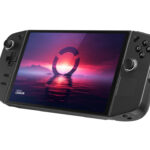
Smartphones and tablets have become an integral part of our lives. We create as well as consume an equal amount of content on our mobile devices. Thus having ample storage on the device has become a must. However, with devices like iPhone, iPad or the recent Galaxy Nexus Android phone, users face an issue of limited storage with no external expansion slot. To solve such issues, Kingston has come with a solution called the Wi-Drive.
Wi-Drive basically expands the storage wirelessly so a user can access all the content on his mobile device without having to attach anything to the device. However, Wi-Drive is just not an portable storage device, but its very well pocketable, almost like an iPhone 3G. But is expanding storage wirelessly worth it? We take a look.
Design:

The Wi-Drive is a sleek mobile-like device which is easy to slip in one’s pocket and come with choices of different storage capacities. The one we tested came with a 16GB NAND flash memory. The Wi-Drive comes in a black glossy finish, which is highly susceptible to fingerprint smudges and features couple of LED lights to signify the status of the Wi-Drive and Wi-Fi activity; a power button; and a mini
USB 2.0 port on the top. Integration of mini USB is not a big deal but it would have been better had Kingston opted for a microUSB port just like most of the smartphones.
Performance:

To give you a brief background, Wi-Drive needs to be connected wirelessly, using the WiFi to the device and the contents can be browsed using the Wi Drive app that needs to be installed on the device. The Wi-Drive has to be added as a wireless hotspot on the device and the app then accesses the content on the drive, which can be streamed onto the target device. Kingston started offering Wi-Drives exclusively for Apple devices but I’m happy to report that the drive is now supported by Android OS as well, thanks to the release of a beta Android app by Kingston.

The app, we can say, is the holy entry for the device to access content, which means the Wi-Drive is practically useless to act as a wireless storage.
To make it work, a user needs to add Wi-Drive wireless network on the device and fire up the app. Once the Wi-Drive is detected, a user can maneuver through the files just like a conventional file manager but has the option either to stream it or copy the content to the local internal storage. Do note, copying works both ways which also allows to copy files from the internal device storage to the Wi-Drive. The app also allows to send files as attachments in an email.

Wirelessly accessing data could pose a threat to user’s privacy but thankfully, Kingston has got us covered. To refrain from anyone gaining an unauthorized access to the content, a user can set WPA or WPA2 security for the drive.
Kingston touts Wi-Drive to simultaneously stream contents from the drive to three different devices and we managed to stream an HD trailer on an iPhone and music on a Galaxy S II without any issues. Playing two HD trailers simultaneously proved to be an issue initially but did manage to play in our second try (not captured on the video). However, one issue we faced with the Wi-Drive was that it turned hot pretty quickly. Continuous streaming of say 5-10 mins would heat the drive up. I would recommend to keep Wi-Drive outside the pocket while using it.
Kingston claims Wi-Drive to have a battery life of up to 4 hours which in comparison gave us about 3-3.5 hours of continuous usage.
Conclusion:
Kingston Wi-Drive is a unique gadget that is a perfect match for devices like iPhone, iPad, iPod touch or Galaxy Nexus where users have no liberty to expand the storage. And although it works as intended, if Kingston could due do something about the heating issues, Wi-Drive would be usable while kept in a pocket.
Rating: 
Pros: Portable, Easy-to-use
Cons: Overheating





Leave a Reply